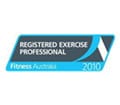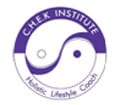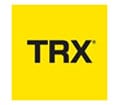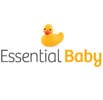Running or walking more? Want to reduce running injuries,, niggles or joint cracking ? Here is 6 simple exercise tips to help reduce pain or avoid injuries.
TRANSCRIPT
Hi, this is Cameron Corish from Core Health Coaching. I hope you’re well.
I just wanted to talk to those people that are actually walking more or running more at the moment. Firstly, congratulations in regards to taking that extra time to look after your health and to starting a new habit. I know it’s not easy to start a new habit. You might be doing more, but at the same time this might be a brand new habit for you. So congratulations for taking action and really looking after your health during isolation.
So if it’s okay, what I wanted to do is actually give you some tips in relation to reduce running injuries or your pain , because one of the things that we find is that a lot of people, when they’re exercising more, create more tightness in their body and then actually start to have some imbalances and then start to get some niggles and some joints that are sort of cracking.
So you may be feeling that at the moment, so this video is very much to give you some corrective exercises and stretching that will relieve that and hopefully reduce any sort of pain or reduce running injuries that you might be getting.
So after 10 years of experience working with walkers and runners, we find that there are some common muscles that are either weak or tight. That causes a lot of postural based issues that causes injury and pain. So I wanted to run through those with you and hopefully make a real difference in regards to your ability to continue to walk and making sure that it’s pain free.
So the first one is when we’re actually exercising, and one of the reasons why we want to exercise is we want to create some tight muscles. We want to get fitter and stronger. But in doing so, what we might do is create these imbalances where one muscle is tighter than the other and then create some pain that’s actually happening in a joint. So I want to go through some of these muscles that become tight through walking or running.
Tip 1 – Stretch Quad and Calf Muscle
So the first one that most people would probably be aware of is our quad muscles, which is the upper part of their thigh and our calf muscle, which is the lower part of our leg on the back side or on the posterior side. So in this video, I’m not going to show you this specific exercise, but if you like this post, what will happen is I will add those videos to some previous ones that I’ve actually done, so you’ve got the instructions of those specific exercises. But today is very much talking about why we’re doing those exercises.
Those quad and calf muscles, most people know what to do with that area and they actually feel that because why? When they’re running or walking, they feel those tight muscles and will stretch them just as a normal part of their exercise.
Tip 2 – Stretch Hip Flexors/Lower Back
The next one that’s probably the biggest culprit in regards to a lot of pain and especially, a lot of lower back pain, and maybe some niggling knees is our hip flexors. Now hip flexors are connected to the top part of our quad muscle or the front part of our thigh connected to our pelvic bone. Now what that does is every time you lift your leg up, that hip flexor is engaged. What it also does is when it becomes very tight, it can actually tilt that pelvis forward towards our quad muscle and then sort of arch our lower back.
So what we want to do is we want to be able to stretch that hip flexor muscle and then what we also want to do is because it pulls out lower back and arches that lower back, we want to stretch that lower back as well. So that’s what is our hip flexor that we want to stretch. We’ve also got that quad and the calf muscles.
Tip 3 – Fascia Release ITB
The last one through there is another muscle or tendon that a lot of people aren’t aware of is called our ITB, iliotibial band and it’s positioned from our knee up to our hip. It’s on the outside part of our leg, pretty much where that that hemline is, that stitching that’s coming up through the side. So for that particular one, you can do some stretches through there, but what we’ve found is that some trigger point therapy, also some fascia releasing is actually probably best.
So you can do that with a trigger ball or a foam roller, but it’s responsible for a lot of that lateral movement of the leg. So if you’re finding that you’re running like a horse and your legs are coming out to the side, is that potentially, that could be tight ITBs and what we want to do is make sure that knee is tracking over where your foot is so that we don’t create a lot of knee-based issues. So ITB can be released. A massage can do the same sort of thing, but with foam roller trigger point therapy, you can actually do that on a regular basis.
So the other thing to think of and consider when you’re actually walking and running is that you’ve got these tight muscles, but the other thing that you want to do is actually think about the muscles that are corresponding to those tight muscles then become weak, so we want to actually build a little bit of strength in those.
Tip 4 – Strengthen Glute and Hamstrings
As an example, we talked about the quadrant and the calf muscles. One of the muscles that becomes weaker when we do more of that work is our glute or our bottom and also our hamstring muscles. So the simple exercise to do for that one is our hip extensions. If you think about it, I’m talking about releasing our hip flexors and then this is a hip extension. So it’s actually going to help both in regards to stretching that hip flexor but also then building strength in the glutes or the bottom. Now most women I know would like a more tone sort of bottom, so I don’t get a lot of argument with that, but it’s really good around taking pressure off the knees and the lower back, is those glutes or the bottom should be a lot tighter.
Unfortunately we don’t see a lot of runners that do a lot of glute work, but you know the top athletes actually do so. So definitely working through the glutes are going to make a big difference.
Tip 5 – Strengthen Lower Abdominal
Corresponding with that is also our core muscles, which are responsible for stabilising our spine and stabilising that hip as well. So our lower abdominal, specifically, is what I’m thinking of, so we’ve got the glutes and the lower abdominal wall that will help stabilise our hip and reduce running injuries.
Tip 6 – Strengthen Glut Medius
So the next one then, is our glute medias muscle. Now this is part of our big muscle group through the glutes, but specifically, this muscles the top part of our glutes and on the outside. It’s responsible again, for this lateral movement that can actually happen with our knees coming out to the side. So we want that one to be fairly strong. Now it’s really unique in regards to where it can be strong and tight, strong and weak at the same time.
So there’s a couple of exercises with that, but the first one is in our clamshell, and with the clamshell, I’ll post those photos, but we’re lifting our knees up to work that glute medius and then also doing some trigger point therapy on there to actually relieve any sort of pain.
So hopefully, those exercises will make a difference in regards to your walking or running, definitely in reducing pain and reduce running injuries.
Obviously, I don’t know your specific circumstances, but as a general rule, they are critical in regards to making sure that you continue to walk in and run pain free. The great thing about those is they don’t take a lot of time.
So if you’ve got any questions, please let me know. Add some questions onto this post. If you do want a copy of those videos, please like this post but otherwise keep walking and running. I’m so impressed and so proud and congratulations on taking a step in prioritising your health.
So thank you again. Talk to you soon. Bye.
Cameron Corish has been caring and achieving results for the local Wishart, Mansfield and Mt Gravatt community for over 10 years. Together with the Core Health Coaching Team, he takes a multi-disciplined and holistic approach to health and fitness addressing the physical, mental and emotional aspects of one’s health.
Ready to feel and look your best? Book a time for a FREE chat and see how we can make a difference in your life. Book here calendly.com/corehealthcoaching or email Cameron at cameron@corehealthcoaching.com.au















Speak Your Mind